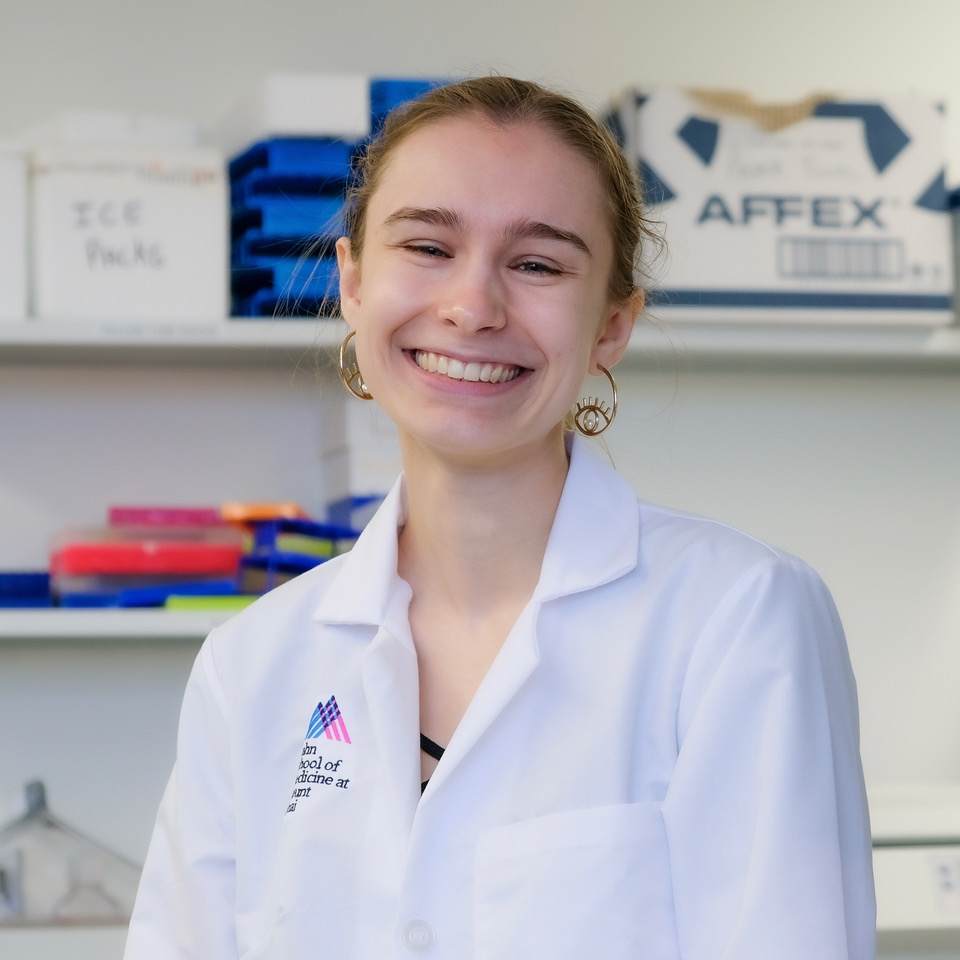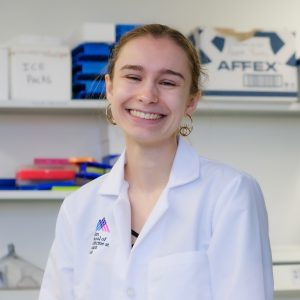Tesia Bobrowski
Tesia Bobrowski is a Ph.D. student in the Rosenberg lab. Originally from North Carolina, she graduated from UNC Chapel Hill in 2021 with a B.S. in Quantitative Biology. Her undergraduate research was split between two mentors: Dr. Alex Tropsha Ph.D. and Dr. Helen Lazear Ph.D. In the Tropsha lab she used quantitative structure activity relationship (QSAR) modeling to identify small molecules active against various viruses, and in the Lazear lab she worked to elucidate non-canonical type III interferon signaling, as well as study how prior immunity to other flaviviruses impacts Zika virus infection. As a graduate student in the Rosenberg lab, she studies the basic biology of Norway rat hepacivirus (NrHV) infection in a collaborative project with Dr. Charles Rice at The Rockefeller University. This rodent hepacivirus virus system shares many features with chronic hepatitis C virus (HCV) infection, for which immunocompetent animal models are currently limited. Outside the lab, Tesia can be found wandering aimlessly around Central Park, doing crafts and jigsaw puzzles, or curled up with a book from the New York Public Library.


Tesia Bobrowski
Tesia Bobrowski is a Ph.D. student in the Rosenberg lab. Originally from North Carolina, she graduated from UNC Chapel Hill in 2021 with a B.S. in Quantitative Biology. Her undergraduate research was split between two mentors: Dr. Alex Tropsha Ph.D. and Dr. Helen Lazear Ph.D. In the Tropsha lab she used quantitative structure activity relationship (QSAR) modeling to identify small molecules active against various viruses, and in the Lazear lab she worked to elucidate non-canonical type III interferon signaling, as well as study how prior immunity to other flaviviruses impacts Zika virus infection. As a graduate student in the Rosenberg lab, she studies the basic biology of Norway rat hepacivirus (NrHV) infection in a collaborative project with Dr. Charles Rice at The Rockefeller University. This rodent hepacivirus virus system shares many features with chronic hepatitis C virus (HCV) infection, for which immunocompetent animal models are currently limited. Outside the lab, Tesia can be found wandering aimlessly around Central Park, doing crafts and jigsaw puzzles, or curled up with a book from the New York Public Library.
